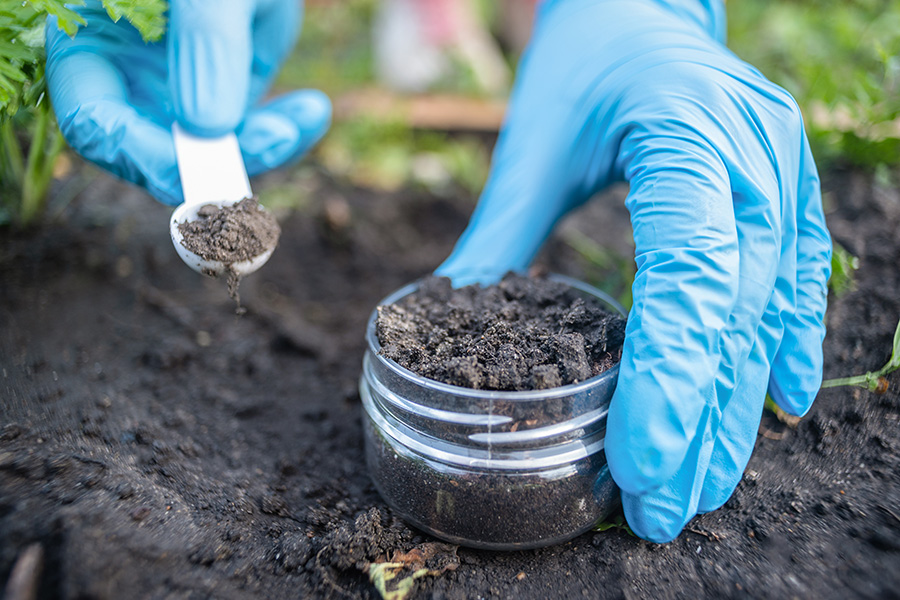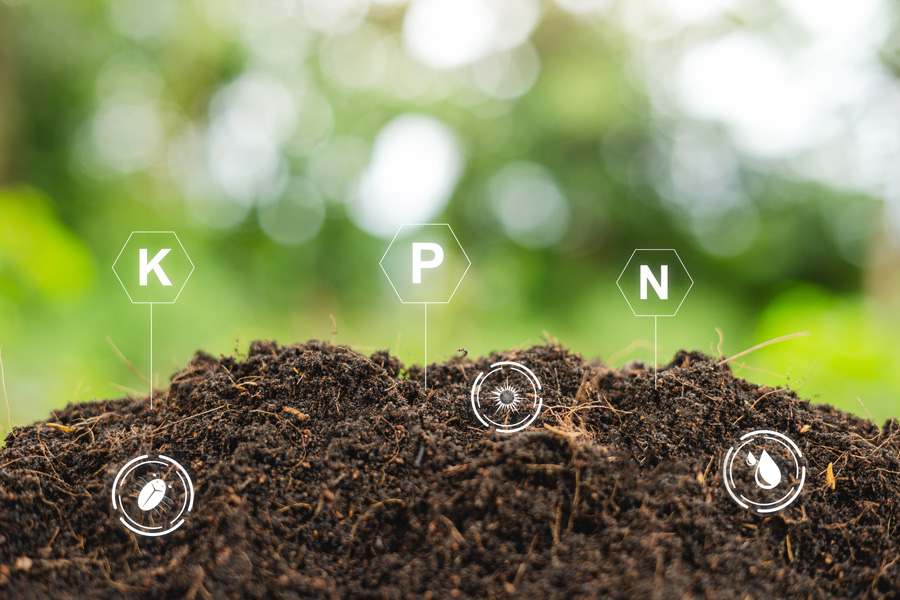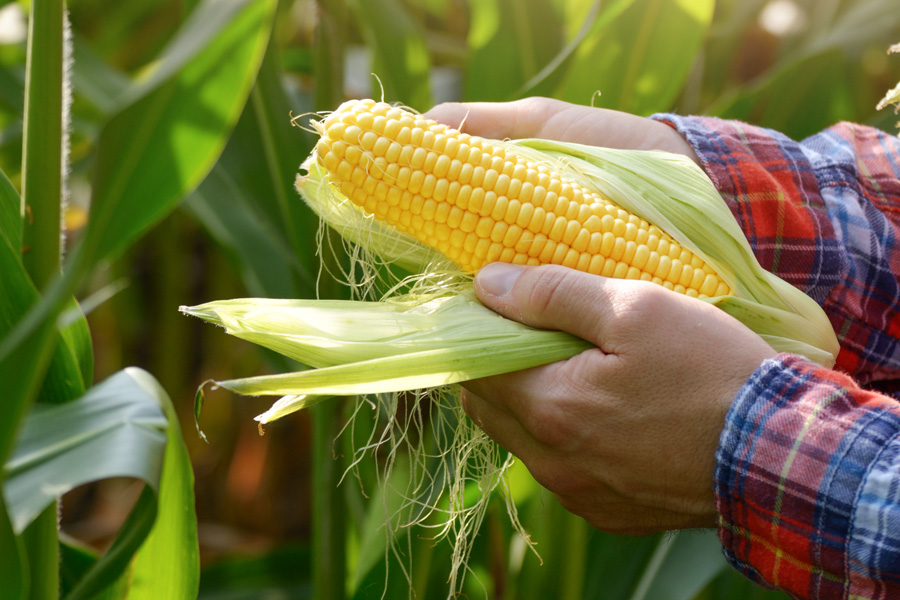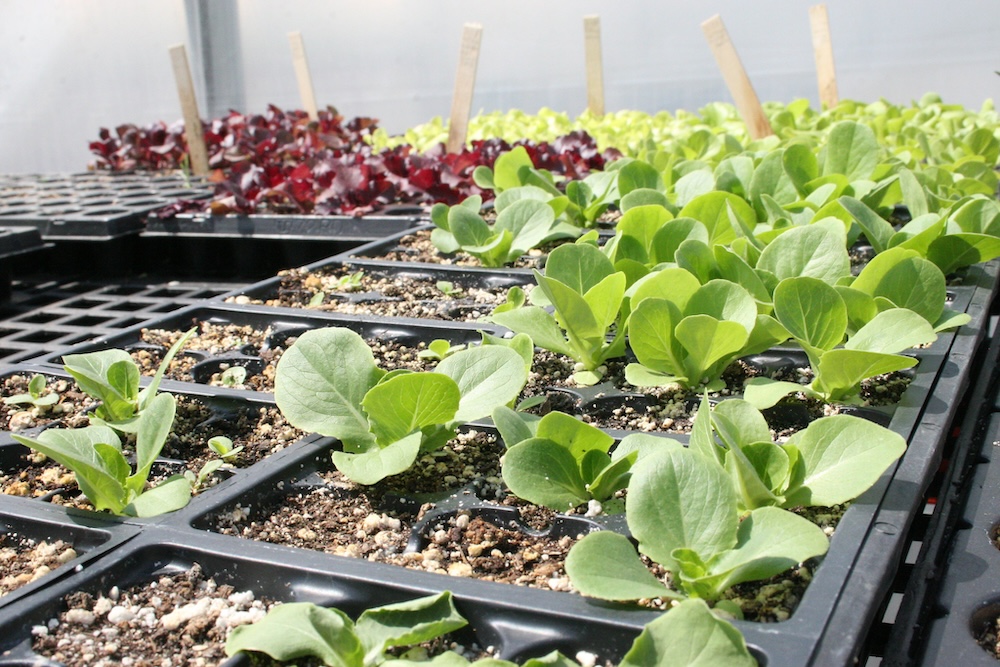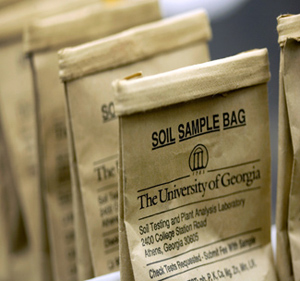
To view this publication as a brochure, click the “Download PDF” button.
Background
Developing and maintaining productive soils begins with soil testing. Soils tests provide information on the soil’s actual nutrient status. Test results are used to determine the amount and kind of nutrients that should be added for the best growth of lawn, garden, and other types of plants.
Steps in Soil Sampling
Recommendations about when and how to apply nutrients are only as good as the soil sample submitted for analysis. To obtain a representative soil sample, the following steps are useful: identify sampling locations (zones), determine the sampling depths, use the right sampling tools, sample at the right time, and handle the samples accordingly.
1. Sampling Locations
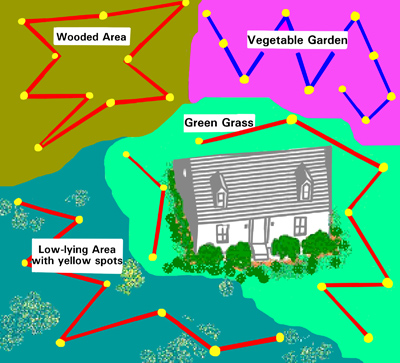 Figure 1. Area divided according to vegetation and soil characteristics. Yellow dots indicate sampling points.
Figure 1. Area divided according to vegetation and soil characteristics. Yellow dots indicate sampling points.Map out the area where the plants are to be grown or are presently growing. This will help in recordkeeping and ensure that the soil is taken from throughout the entire area. Divide the area such that each soil sample represents one plant type or condition. An area that has been divided according to obvious differences in plant types, plant performance, soil types, and drainage is shown in Figure 1.
- Use a zigzag approach when taking samples. Collect eight to 10 soil samples from each location (zone) as shown in Figure 1.
- For trees and shrubs, take soil samples from six to eight spots around the drip line of the plants.
2. Sampling Depth
The depth of sampling depends on the type of plants being grown.
- For lawns, sample to a depth of 4 in.
- For gardens, ornamentals, mixed fruit trees, and wildlife plots, sample to a depth of 6 in.
3. Sampling Time
Soil sampling should be done well in advance of planting or spring green-up. This allows adequate time for sample analysis, data interpretation, and fertilizer and lime application.
4. Sampling Tools
Use clean sampling tools and containers to avoid contaminating the soil sample. Never use tools or containers that have been used for fertilizer or lime. Collect samples with tools like trowels, shovels, spades, hand probes, or hand augers.
5. Sampling Procedures
Clear the ground surface of grass thatch or mulch (Figure 2). Using a trowel, push the tool to the desired depth into the soil. Push the handle forward, with the spade still in the soil to make a wide opening. Then, as shown in Figure 3, cut a thin slice from the side of the opening that is of uniform thickness, approximately 1/4-in. thick and 2 in. in width, extending from the top of the ground to the depth of the cut. Collect from several locations. Combine and mix them in a plastic bucket to avoid metal contamination. Take about a pint of the mixed soil and place it the UGA soil sample bag. Be sure to identify the sample clearly on the bag and the submission form before mailing.
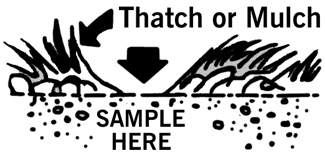 Figure 2. Remove grass thatch or mulch before sampling.
Figure 2. Remove grass thatch or mulch before sampling.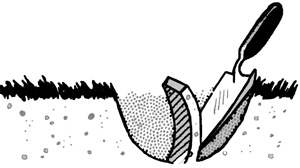 Figure 3. Soil sampling with a trowel.
Figure 3. Soil sampling with a trowel.Sample Handling
Samples should be air dried overnight. Dry samples on a flat surface lined with clean white paper. Take care to avoid contamination. After drying, transfer the sample to a soil sample bag and bring it to your local Extension office to fill out the submission forms and to let them know which recommendations and information you need.
Locate your county office on the Extension website (extension.uga.edu/county-offices.html) or call 1-800-ASK-UGA1.
Frequently Asked Questions
Q: When and how often should soils be tested?
A: Soils can be tested any time during the year. However, allow enough time for the analysis and for fertilizer and lime application. Lime reacts slowly and, if possible, it should be mixed with the soil 2 to 3 months before planting. Generally, fall is the most desirable time to sample because landscapes and gardens are usually dry and easily accessible.
Once medium or high fertility levels are established, lawn and ornamental areas need to be sampled every 2 to 3 years.
Vegetable gardens should be sampled every 1 to 2 years.
Q: How soon will I get my results back (turnaround time)?
A: The analysis takes 2 to 3 working days from the time the lab receives the samples. In general, it takes 4 to 6 days from the time we receive the samples to the time you get your test reports back.
Q: Who do I contact regarding my soil test results and recommendations if I don’t understand the numbers?
A: The Soil Test Report provides an interpretation of all soil tests done by the Soil Testing Lab and is accompanied by appropriate nutrient and lime recommendations. If you need further information about your test results, contact your local UGA Cooperative Extension office at 1-800-ASK-UGA1.
Q: What if I don’t have the suggested fertilizer or want to use organic amendments?
A: We have tools and bulletins to help you make the appropriate conversions. Visit our website at (aesl.ces.uga.edu) to find our fertilizer calculator and other helpful info.
Q: Can I visit or contact the UGA soil lab?
A: We welcome all questions and visitors to the lab. You may contact us at soiltest@uga.edu.
This brochure was modified and adapted in part from Owen Plank’s “Soil Testing for Home Lawns and Gardens.”
